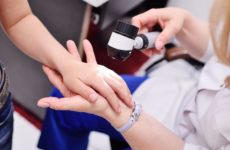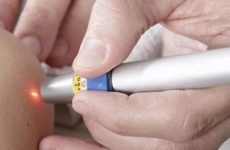Содержание:
Introduction
With the problem of removing moles, papillomas and warts, people often turn to folk methods, healers, girlfriends for advice. But all these tips and methods are good if they do no harm.
But it is precisely such traditional medicine that most often leads to the formation of malignant tumors. Only examination and diagnosis of the cellular composition of the neoplasm can give permission for any manipulations.
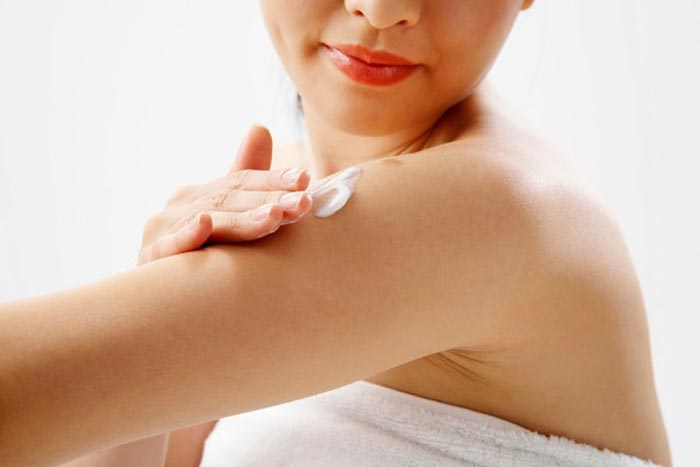
Why is the virus dangerous?
Outwardly, papillomas have an unpleasant and repulsive appearance, which brings discomfort to the person who has them on the body. But, in addition to the cosmetic problem, much more papillomas pose a danger to health and life. There are frequent cases of degeneration of these neoplasms into a cancerous tumor. This can happen if the papilloma has an oncogene.
Papillomas are often located in the armpits, on the collar zone of the neck and other places where clothes can be rubbed. It also carries a danger due to the possibility of rubbing and tearing of these formations. As a result, inflammation and bleeding papilloma.
If the papillomatosis virus has captured the tissues of the larynx, this can lead to difficulty in eating, breathing and changes in the person’s voice.
Why get rid of neoplasms?
Removal of papilloma not only corrects cosmetic problems, but also solves the most important problem – the ability to avoid its degeneration into cancer.
When a papilloma ruptures, there is a risk of lymphadenitis if the formation is located near the lymph nodes.
In modern pharmacology, new medicines have begun to appear, which, as pharmacists say, can destroy the papillomatosis virus in the body. But even with the complete suppression of the virus in the body, already formed neoplasms must be removed from the body.
It is always necessary to monitor the condition of any neoplasms on the body. If it is noticed that they began to grow rapidly, changed color and shape, then it is impossible to postpone the removal of the papilloma.
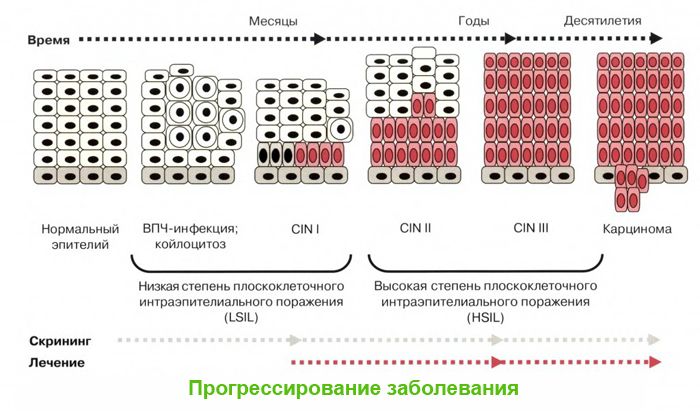
Women who are planning pregnancy and childbirth should prepare for this important moment. So that the baby is not infected in the womb and at the time of birth, it is necessary to prepare and remove all formations from the body of the expectant mother.
Ways
The best way to deal with papillomas, how to remove them, has not yet been invented. Therefore, it remains only the choice of which method of removal to use. To date, papillomas can be removed both in a beauty parlor and in a medical center. In both cases, they can offer one of the three most common types of removal of neoplasms. Namely:
With a laser
Laser removal is a burning out of the formation on the leg with the help of a laser.
Advantages:
- the laser acts pointwise on the skin tissues and allows you to remove the papilloma as accurately as possible without harming healthy skin;
- at the time of removal, the laser also disinfects the wound;
- laser removal does not leave behind scars and scars;
- rapid wound healing ;
- after 3-4 weeks it is impossible to distinguish the place of papilloma removal from other skin.
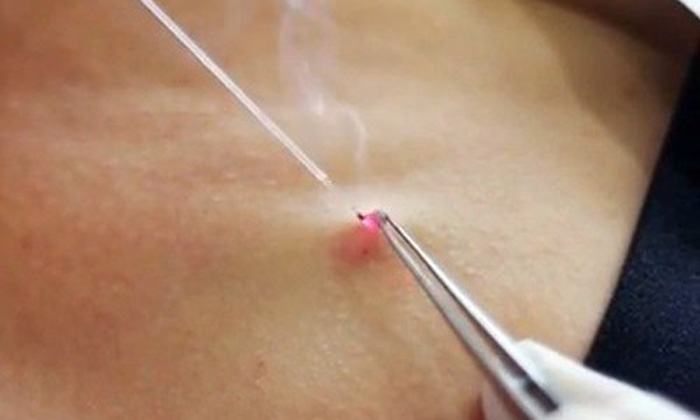
The procedure is recommended for people who have papillomas on the face and other parts of the body.
Contraindications:
- acute period of chronic diseases;
- viral and infectious diseases;
- children’s age (up to 16 years);
- malignancy of education.
The procedure is carried out only in medical clinics and cosmetology centers that have received certification for this procedure.
Before starting the removal, the place where the papilloma is located is treated with an analgesic. Put on glasses for the patient and the doctor. The thin tip of the apparatus acts on the papilloma and burns it out. The duration of the procedure is several minutes, depending on the size of the formation. Usually it’s two to three minutes. After the end of laser removal, the doctor fixes the adhesive plaster on the wound.
Cryodestruction
Cryodestruction is a method of removing neoplasms using liquid nitrogen.
Advantages:
- After the procedure, there are no traces of exposure.
- Painless.
- There are no complications after the procedure.
- Papillomas of any size are removed, even very large ones.
- The possibility of removing formations in children and pregnant women.
- No bleeding.
- Low cost of the procedure.
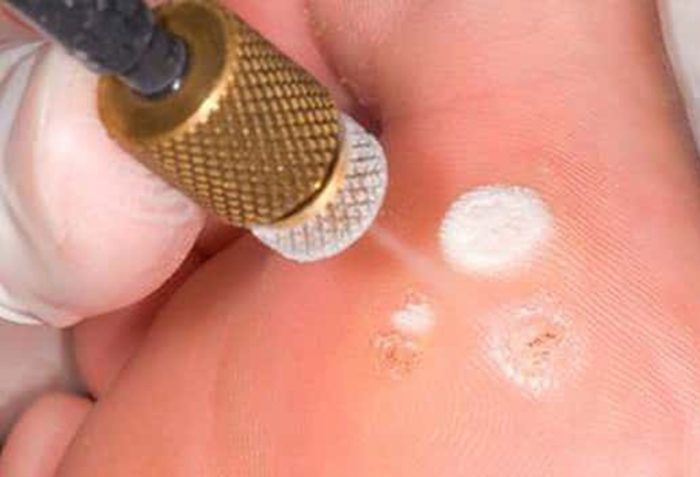
Contraindications:
- Malignancy.
- Intolerance to liquid nitrogen.
- Infectious diseases.
- Diabetes.
The procedure for removing papilloma with liquid nitrogen is carried out in a medical facility by an experienced doctor.
Areas of skin that should not be treated are covered with sterile gauze pads. Removal occurs with the help of a special apparatus, a cryodestructor. The doctor applies the tip of the cryodestructor to the papilloma, and it freezes in a matter of seconds.
The treatment site becomes hard and painful. A day later, a blister with a clear liquid forms in this place. Then everything is tightened with a crust, which disappears on its own after a month. In place of the previous papilloma there will be a new pink epithelial tissue.
Within a month, after undergoing the cryodestruction procedure, it is impossible to:
- pierce a blister;
- remove the crust;
- apply various ointments and creams to the wound;
- expose it to ultraviolet radiation and be in the sun.
Electrocoagulation
Electrocoagulation is a method of removing neoplasms using a high frequency current.
Advantages:
- Method safety.
- Removal in one session.
- Can be used without age restrictions.
- Ability to control the removal process. The doctor can adjust the strength and frequency of the current during the procedure.
- No bleeding or side effects.
- The possibility of examining the histology of a removed piece of the body.
- The cheapest way to remove papilloma compared to other methods.
During the procedure, the neoplasm is removed and the tissues on which the tumor was attached are cauterized. Removal is carried out using a special apparatus, which has a kind of loop, heated by an electric current. The device is equipped with several types of nozzles, which are used depending on the thickness, shape, size and location of the papilloma.
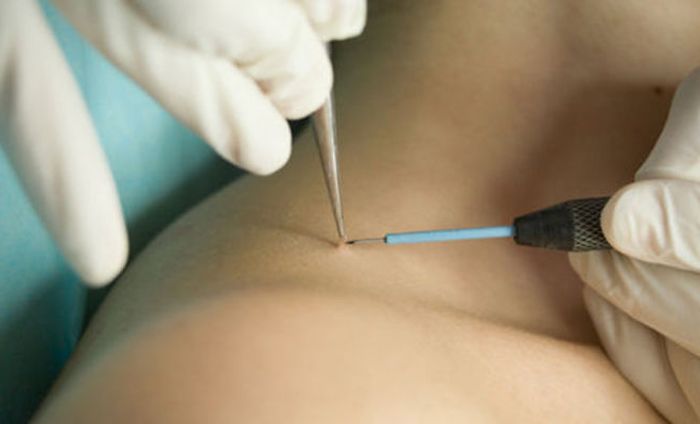
Before removal, the impact site is anesthetized. Next, the doctor conducts an antiseptic and begins the removal process.
Contraindications:
- Allergy to anesthetics.
- Individual intolerance to procedures associated with electric current.
- Low blood clotting.
- Infectious diseases.
- Exacerbation of chronic diseases.
- Malignancy of education.
- Herpes.
- Pregnancy and lactation.
- Diabetes.
- The tendency of the body to form keloid scars.
Subsequently, at the site of electrocoagulation, crusts form, which fall off on their own. They should not be torn off and attempted to be removed, otherwise bleeding may begin and leave scars. In the first days after the procedure, there is a slight soreness, which soon disappears.
Complete healing of the wound occurs after ten days. The doctor usually recommends lubricating the wound with a barely pink solution of potassium permanganate three times a day. This will prevent infection and prevent scar formation after healing.
Photo: before and after
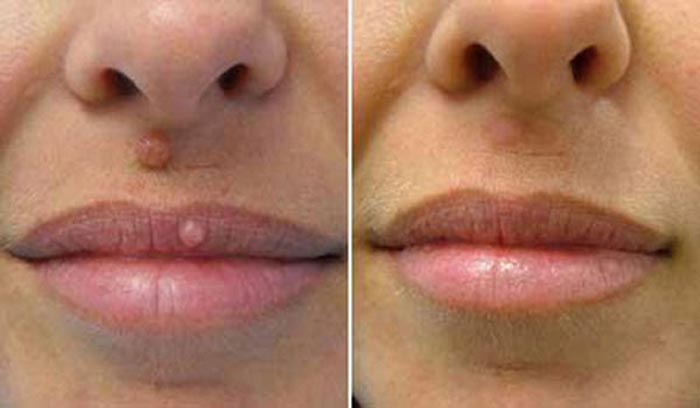
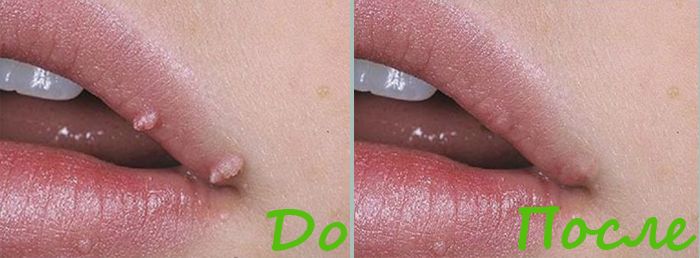
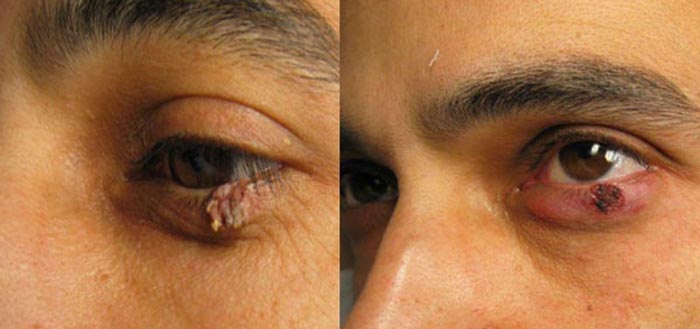
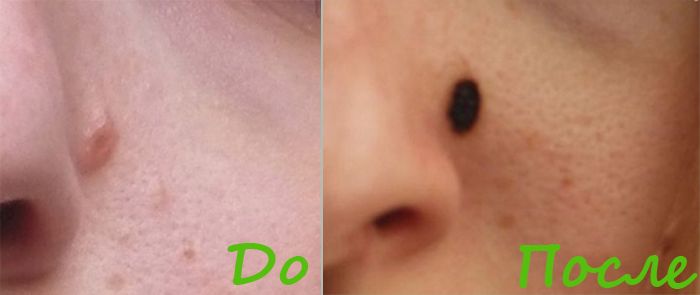
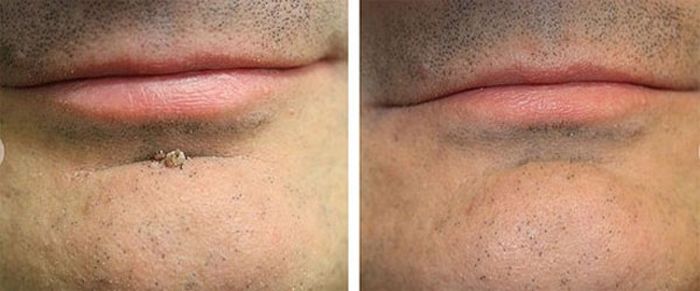
How long does healing take
No matter how the neoplasm is removed, usually the wound heals in two to four weeks.
The site of papilloma removal for the first day may swell, redden, and be painful. This is a normal phenomenon, which completely disappears after three days.
The wound does not heal, how to care for the skin, how to treat the wound?
The entire period of wound healing must be attentive to the area of \u200b\u200bthe skin on which the papilloma used to be. Here are some tips for caring for the wound left after removal:
- It cannot be exposed to solar radiation, so it is best to choose autumn and spring for removal.
- Try not to wet and not injure the crust.
- Treat with medications , if necessary, only as directed by the doctor who performed the procedure.
- Try not to cover the wound with clothing. With free ventilation, healing is faster.
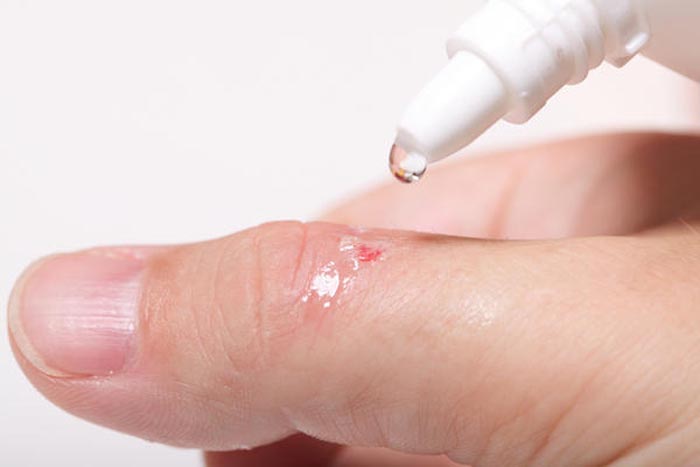
Prohibited wound care products
It is strictly forbidden, without the knowledge of the doctor, to apply any creams, ointments, lotions, scrubs and other means to the site of papilloma removal. And also use chemistry for the house and detergents. While taking a shower, do not rub the place where the wound is located with a washcloth and pumice stone.
What can’t be done?
- You can not scratch the wound.
- Do not try to remove the crust yourself.
- Do not apply any funds to the wound.
- You can’t be in the sun.
- You can not dry the wound.
Skin restoration at home
After removal of the neoplasm in a medical institution, the person returns home and undergoes a rehabilitation period at home. The crust that formed after removal requires careful treatment. Mood and thoughts should be only positive. Meals and rest are regular. Sufficient time must be devoted to a walk in the fresh air. Rapid wound healing is facilitated by:
- Vitamin complexes containing vitamin A, E, C and K.
- Eating large amounts of dairy products, fish and vegetables.
- High immunity.
How to prevent complications?
Complications after the papilloma removal procedure are rare. But if this happens, then the reason for this is the improper care of the crust formed after removal.
If the wound becomes wet, oozes, redness and swelling persist for a long time, itching and other symptoms that should not be present, you should consult a doctor who removed the papilloma. After the examination, the doctor will prescribe the necessary medications and perform medical manipulations with the wound and crust.
For better wound healing, after the removal operation, it is recommended to start taking minerals and amino acids that enhance the production of collagen and elastin. It is collagen and elastin that contribute to the rapid formation of new tissue at the site of the operation.
Price
When contacting the clinic for the removal of neoplasms, patients most often focus on the cost of the procedure. In different clinics, the price varies depending on the city, the prestige of the institution, the complexity, the type of removal chosen, the size of the tumor and other factors. On average, in Moscow, the procedure for removing papillomas with a laser will cost 1,500 rubles.
Removal with liquid nitrogen will cost 1000 rubles per centimeter of neoplasm. Electrocoagulation will cost from 600 to 800 rubles. In other cities of Russia, a similar procedure will cost an order of magnitude lower, and the quality of removal of the neoplasm will not suffer from this. A huge number of highly qualified specialists in the field of cosmetic surgery work throughout the country.
Conclusion
The removal procedure is simple, but requires high responsibility in preparing for it, diagnosing papilloma, as well as following all recommendations after it is carried out.
Particular attention should be paid to the postoperative period: eat a full and varied diet, avoid infection with infectious diseases, dress warmly when going out, take walks in the fresh air, relax with your favorite pastime, sleep for at least eight hours.
Reduced immunity is most often to blame for the appearance of papilloma, so a large amount of vegetables and fruits, freshly squeezed juices, and vitamins should be consumed. It is necessary to raise the body’s defenses in different ways.


